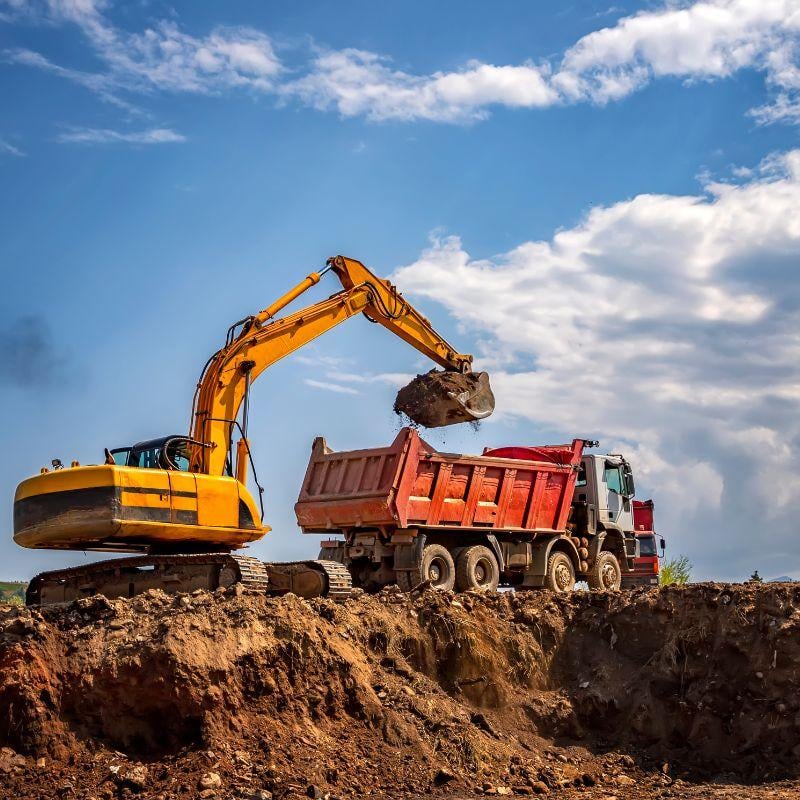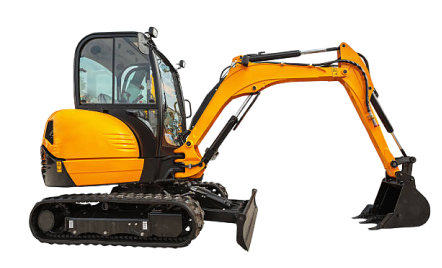Discovering the Financial Perks of Leasing Construction Equipment Compared to Having It Long-Term
The choice between renting and possessing building equipment is pivotal for economic management in the industry. Renting out offers immediate price financial savings and operational adaptability, permitting companies to assign sources a lot more efficiently. Recognizing these nuances is important, particularly when considering how they straighten with specific project requirements and financial strategies.

Cost Contrast: Renting Out Vs. Owning
When evaluating the economic implications of having versus renting construction devices, a comprehensive cost comparison is necessary for making educated choices. The selection in between renting out and having can substantially impact a firm's bottom line, and comprehending the linked expenses is essential.
Renting building devices typically involves lower in advance costs, permitting companies to allot capital to various other operational requirements. Rental contracts often consist of flexible terms, allowing firms to gain access to progressed machinery without long-lasting dedications. This versatility can be specifically advantageous for short-term tasks or varying work. Nonetheless, rental costs can build up gradually, possibly surpassing the cost of ownership if equipment is needed for an extended duration.
Alternatively, possessing building tools requires a significant first financial investment, together with ongoing prices such as funding, insurance coverage, and depreciation. While possession can bring about long-lasting cost savings, it likewise connects up capital and may not provide the same level of adaptability as renting. Furthermore, possessing devices requires a commitment to its use, which may not constantly straighten with job demands.
Ultimately, the decision to rent out or possess ought to be based on a comprehensive evaluation of certain job demands, financial capacity, and lasting calculated goals.

Maintenance Expenditures and Responsibilities
The option in between renting and having construction equipment not just entails monetary factors to consider but also incorporates recurring maintenance expenses and responsibilities. Possessing tools needs a considerable commitment to its maintenance, which consists of routine evaluations, fixings, and possible upgrades. These obligations can promptly collect, bring about unforeseen prices that can stress a spending plan.
In comparison, when renting tools, maintenance is generally the responsibility of the rental firm. This plan permits contractors to stay clear of the financial concern related to wear and tear, along with the logistical obstacles of scheduling repairs. Rental agreements commonly include stipulations for upkeep, indicating that specialists can concentrate on finishing jobs instead of fretting about devices problem.
Additionally, the varied variety of tools offered for rent makes it possible for companies to select the current designs with innovative technology, which can improve performance and productivity - scissor lift rental in Tuscaloosa Al. By selecting rentals, services can stay clear of the long-term obligation of tools devaluation and the associated maintenance migraines. Ultimately, assessing upkeep expenses and responsibilities is essential for making a notified choice concerning whether to own or lease building and construction equipment, considerably affecting total task prices and functional efficiency

Devaluation Influence On Possession

A substantial element to take into consideration in the choice to own construction devices is the effect of devaluation on general possession prices. Devaluation stands for the decrease in value of the equipment in time, influenced by elements such as usage, deterioration, and improvements in modern technology. As tools ages, its market price lessens, which can significantly influence the owner's financial position when it comes time to trade the tools or market.
For construction firms, this depreciation can translate to significant losses if the tools is not made use of to its maximum possibility or if it ends up being obsolete. Owners must account for depreciation in their financial forecasts, which can result in greater total costs contrasted to leasing. Additionally, the tax effects of depreciation can be complex; while it might supply some tax advantages, these are often balanced out by the truth of minimized resale value.
Inevitably, the problem of devaluation stresses the relevance of recognizing the long-term financial commitment included in owning building and construction devices. Firms should meticulously assess exactly how frequently they will make use of the equipment and the prospective economic impact of depreciation to make an enlightened choice about ownership versus renting out.
Financial Flexibility of Leasing
Renting out building devices supplies significant financial versatility, permitting firms to allocate resources a lot more successfully. This flexibility is particularly vital in a sector characterized by fluctuating job needs and differing work. By deciding to rent out, businesses can avoid the substantial funding outlay required for buying devices, protecting capital for various other functional requirements.
Furthermore, leasing devices allows business to tailor their devices choices to particular job needs without the lasting dedication related to ownership. This implies that companies can quickly scale their equipment inventory up or down based upon existing and awaited job requirements. As a result, this versatility decreases the risk of you can try these out over-investment in equipment that might end up being underutilized or outdated in time.
Another economic benefit of leasing is the potential for tax obligation advantages. Rental payments are frequently thought about overhead, allowing for prompt tax obligation deductions, unlike devaluation on owned devices, which is topped several years. scissor lift rental in Tuscaloosa Al. This immediate cost recognition can better improve a company's money position
Long-Term Task Considerations
When evaluating the long-lasting demands of a construction service, the choice between renting and Visit This Link having tools becomes more complicated. For jobs with prolonged timelines, acquiring tools might appear helpful due to the capacity for lower overall costs.
The construction sector is progressing quickly, with new tools offering enhanced performance and safety features. This flexibility is especially useful for companies that deal with varied projects requiring various types of equipment.
In addition, monetary stability plays a critical duty. Possessing devices usually involves considerable capital financial investment and depreciation concerns, while leasing enables even more predictable budgeting and capital. Inevitably, the option between renting and having needs to be lined up with the strategic objectives of the building business, thinking about both current and expected task demands.
Final Thought
In verdict, renting out building and construction tools supplies substantial economic benefits over lasting possession. Inevitably, the choice to rent out instead than very own aligns with the dynamic nature of building projects, allowing for adaptability and accessibility to the latest equipment without the monetary burdens linked with possession.
As equipment ages, its market value decreases, which can significantly affect the owner's economic setting when it comes time to trade the equipment or market.
Leasing building and construction devices provides significant economic go to website adaptability, allowing business to allot sources much more efficiently.Furthermore, renting devices allows companies to customize their equipment choices to specific project demands without the long-term commitment linked with possession.In conclusion, renting building tools supplies significant monetary advantages over lasting ownership. Inevitably, the decision to rent out rather than own aligns with the dynamic nature of building and construction jobs, permitting for versatility and accessibility to the most current equipment without the economic concerns linked with ownership.